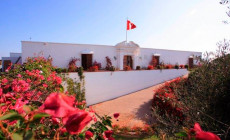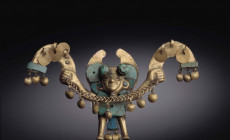-
Latin America
Latin America
- Countries (hidden space)
- Galapagos & Ecuador
- Guatemala
- Mexico
- Panama
- Peru
- Popular Attractions
- Machu Picchu
- Inca Trail
- Easter Island
- Galapagos Islands
- Patagonia
- Rio de Janeiro
- Iguazu Falls
-
Africa
Africa
- Spacer Africa
- South Africa
- Zimbabwe
- Popular Attractions
- Cape Town
- Okavango Delta
- Sossusvlei Dunes
- Victoria Falls
- The Kruger
- The Garden Route
- Masai Mara
-
Asia & Middle East
Asia & Middle East
- Asia
- Borneo (Malaysia)
- Cambodia
- India
- Japan
- Middle East
- Jordan
- Spacer Asia
- Laos
- Sri Lanka
- Uzbekistan
- Vietnam
- Popular Attractions
- Taj Mahal
- Lion Rock (Sigiriya)
- Angkor Wat
- Ha Long Bay
- Kyoto
- Petra
-
Destinations
- Latin America
- Argentina
- Bolivia
- Brazil
- Chile
- Colombia
- Costa Rica
- Galapagos & Ecuador
- Guatemala
- Mexico
- Panama
- Peru
- Asia
- Borneo (Malaysia)
- Cambodia
- India
- Japan
- Laos
- Sri Lanka
- Uzbekistan
- Vietnam
- Middle East
- Jordan
- Southern & East Africa
- Botswana
- Kenya
- Namibia
- South Africa
- Zimbabwe
- Contact Us
-
About
About
Llama Travel provides high quality holidays at the lowest possible prices.
99% recommend us Lower prices - guaranteed Financially protected by ATOL
Larco Museum
www.museolarco.org
This museum has a wonderful collection of ceramics and other artefacts in excellent condition, and cover most of Peru's pre-Hispanic cultures, especially the Moche and Chimú cultures. The collection in the museum is very well presented and probably gives the best introduction and overview of Peruvian pre-Hispanic cultures in the country. There are 45,000 pieces in the museum, although only a small fraction of these are actually on display. The rest are housed in the storeroom, which can be visited and the pieces seen. The museum also has a large collection of erotic ceramics, which are housed in a separate section of the museum where admission of children is prohibited. These are mostly from the Moche culture, and served different purposes, including humour and warnings about deviant behaviour. There are some pieces from the Salinar culture, which are said to be the first erotic representations in the world. In addition to the ceramics, the museum also houses some Chavín stone heads, some metalwork and some excellent gold, silver and turquoise jewellery. There is an excellent restaurant in the attractive gardens. The museum is now open until 10pm each day, so you can have dinner and explore the museum after visiting the historic centre.
National Museum of Archaeology, Anthropology and History of Peru
This museum (closed on Mondays) has probably the finest archaeological collection in Lima, with excellent ceramics and many superb Paracas textiles. The museum also contains various important stone pieces, including the wonderful carved Stella Raymondi and the Tello Obelisk, both from Chavín de Huántar. There are a number of fine gold and silver pieces also on display. The museum presents a history of Peru, starting with early pre-Hispanic cultures, advancing to the Incas, although the labelling and presentation is not great, so it is recommended to take a guide. In addition to the pre-Hispanic content of the museum, there is a section dedicated to the colonial and republican eras, with furniture and paintings from the period. There are some very interesting descriptions of the development of indigenous Peruvians after the arrival of the Spanish, and the section is worth visiting. The Larco museum is a 15-minute walk from the museum, so it is very easy, and worthwhile, to visit both.
Gold Museum
The famous gold museum (closed on Sundays) in Lima contains an enormous collection of 10,000 gold, silver and copper pieces, some of which are excellent. The museum was briefly closed in 2001, with the suspicion that many of the pieces on display are fakes. In addition to the precious metals, the museum has a good collection of textiles, stone carvings and ceramics, including a large collection of erotic ceramics.
The collection contains pieces from most of the important Peruvian cultures, including Chavín, Vicus, Moche, Chimú, Inca, Chancay, Paracas, Nazca and Tihuanaco. The star of the show is the Chimú gold Tumi, a 20cm-tall ceremonial knife, replicas of which can be found throughout Peru. Many of the pieces are often abroad at temporary exhibitions, but the collection is so large that this does not really matter.
Museum of the Inquisition
The church in Lima was all-powerful, and Lima was the last city to abolish the Inquisition, only abandoning the practice in 1820. From the date of its inauguration in 1569 to its abolition, the Inquisition in Peru executed 32 people, although far more were tried and tortured. The museum gives an interesting insight into the processes of the Inquisition, and has some models of inquisition torture practices. The building should not be missed for the incredible carved roof in the courtroom. This is made up of 33,000 pieces of wood, and there are no nails – everything fits together like a giant jigsaw puzzle. Tours of the building are available in Spanish, English, French, Italian and Portuguese.



